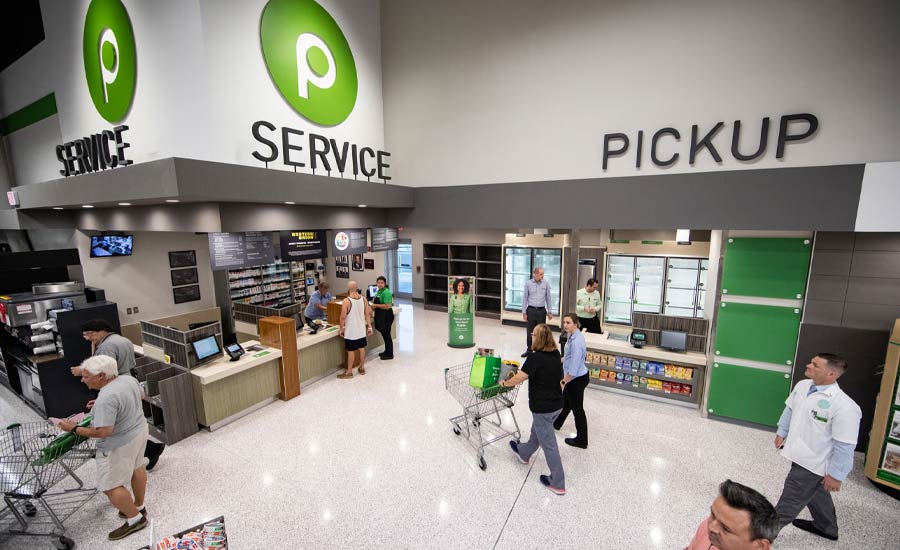Channel Strategies
Inflationary trends, consumer behavior continues to impact grocery channel
Grocers embrace omnichannel shopping to offer convenience

Image courtesy of Getty Images
In the realm of business, the terms expansion and growth seem to go hand in hand. For example increasing the size, scope or reach of a business can refer to expansion, while growth is considered to be the process of increasing revenue, profits and market share.
Yet, for supermarkets and grocery stores during the past couple of years, inflation has pushed up the price of groceries, bolstering revenue growth but resulting in smaller sales volumes, experts note.
According to an October 2023 report by IBISWorld, titled “Supermarkets & Grocery Stores in the US,” inflationary trends have led grocers to look for ways outside of revenue growth to increase market share.
“Shift consumer preferences have driven demand for premium, organic and all-natural brands, bolstering revenue,” the report states. “Consumers have also shifted toward limited assortment and fresh format stores that provide a simpler layout and primarily sell less costly store-brand products, forcing many grocery stores to offer big discounts and promotions to drive foot traffic and strengthen consumer loyalty.
“Growth within the space has become limited, mainly caused by high competition," the report continues. “Large grocers look to increase their market share through mergers and acquisitions, as the saturated market prevents organic growth.”
Alexia Moreno, lead analyst at IBISWorld, New York, suggests that mergers like that of Kroger and Albertsons will significantly impact the grocery channel.

“Kroger and Albertsons are the two largest supermarkets in the United States. Many argue that the merger would negatively impact customers as stores gain power and the ability to charge higher prices,” Moreno says. “This will likely harm smaller grocers already operating with a small profit margin. Significant price rises would likely push more consumers toward online retailers, such as Amazon Fresh, hurting traditional retailers.”
Moreover, as inflation continues to impact grocery prices, Moreno notes that consumers are becoming increasingly price-sensitive, encouraging them to look for stores that carry their preferred products at a lower price, including wholesale clubs.
“This has also led to significant competition from online retailers, which often benefit from lower operating costs,” she says.
Omnichannel shopping bring wins
During the pandemic, where supermarkets leveraged digital platforms to adapt to changes in consumer needs, experts note that grocery stores now use these tools to offer consumers convenience.
As omnichannel shopping becomes more common, Moreno points to two determining factors at play for grocers to remain competitive.
“Demand for traditional grocery stores will likely depend on two main determinants: convenience and price,” she explains. “Demand from their own websites and other delivery mobile apps will continue to generate revenue for traditional retailers, offering consumers the convenience of online shopping. Stores are also encouraged to offer more sales and in-store offers to attract customers and boost in-person shopping.”
With more shoppers opting to save time by ordering groceries online, Salisbury, N.C.-based Food Lion announced in December the expansion of its Food Lion To Go grocery pick up service to 35 more stores.
With the availability of this service at these new stores, the omnichannel retailer now offers Food Lion to Go Pickup or Home Delivery at approximately 90% of its 10-state operating area, the company notes.
“We are excited to expand this convenient service to more stores in the Food Lion footprint and support our neighbors, especially during one of the busiest times of the year,” said Evan Harding, director of digital and eCommerce at Food Lion, in a statement. “With the Food Lion To Go service, we provide our neighbors with the option to shop through the channel they prefer, in-store or online, still ensuring they have access to the freshest groceries at affordable prices.”
Retail chains also are looking to broaden consumer engagement within digital offerings. In October, The Kroger Co., Cincinnati, Ohio, announced it now accepts EBT payment for digital Pickup and Delivery orders across Kroger Family of Stores, expanding customer access to fresh, healthy foods under the Supplemental Nutrition Assistance Program (SNAP).
“We believe everyone should have access to fresh, affordable and nutritious food,” said Rodney McMullen, chairman and CEO of Kroger, in a statement. “I am so proud of our passionate teams who worked closely with the USDA to remove barriers to healthy foods so that more of America can access the food they need to thrive.”
SNAP payments online make it easier and more convenient than ever for customers to purchase fresh and healthy foods, the company notes. Customers also can explore nutrition facts and healthy options using Kroger’s OptUP nutrition rating system for free, it says. OptUP is accessible through the Kroger app or at Kroger.com. As customers fill their carts, they can view nutrition scores for their favorite items and explore “better-for-you” alternatives and shop items that are aligned to specialized diets, including low sodium, no sugar added or contains probiotics, the company says.
Trends impacting today, tomorrow
As supermarkets typically offer everything from cleaning products to produce, IBISWorld’s Moreno notes that, with so many products, warehouse space is limited, so SKU proliferation within beverages can create competition for shelf space.
“However, beverages are only estimated to generate 8% of supermarkets’ revenue, so a greater number of beverage SKUs is not likely to significantly impact supermarket operations,” she explains.
Nevertheless, with consumers becoming more health-conscious across the board, this trend is positively impacting beverage sales, Moreno says.
“Although demand for soft drinks has fallen, sales of value-added products, such as low-calorie fruit juices and energy drinks, have been on the rise.” she explains. “Consumers seem willing to splurge on expensive beverages with perceived health benefits, driving beverage sales.”
Looking forward, Moreno anticipates that health trends, food and beverage prices, as well as omnichannel shopping will continue to impact the grocery channel.
“Supermarkets and grocery stores are expected to slow down in 2024, mainly driven by stabilizing economic conditions,” she says. “As inflation continues to cool down, food prices are likely to follow, resulting in lower revenue.”
As for digital trends, Moreno suggests that these trends could negatively impact grocers, especially smaller retails.
“As consumers continue to purchase more products from online retailers, supermarkets’ performance is likely to take a hit,” Moreno explains. “As a result, more supermarkets will be pushed to adopt online ordering and pick-up services or reach partnerships with delivery services. These trends are expected to harm smaller retailers, which often lack the scale and resources to make these services lucrative.”
Looking for a reprint of this article?
From high-res PDFs to custom plaques, order your copy today!






